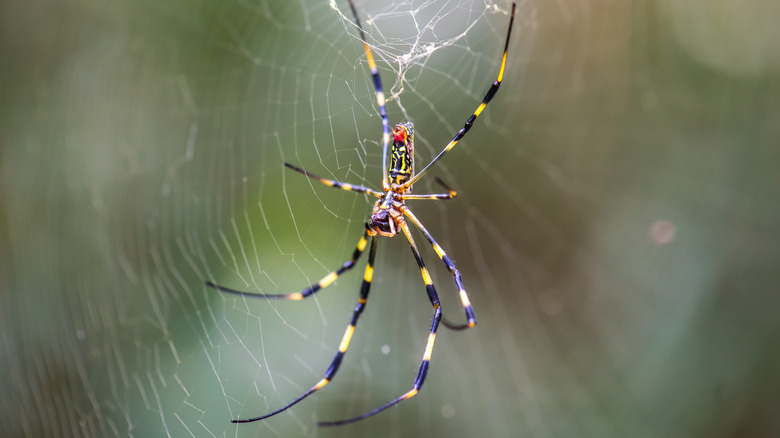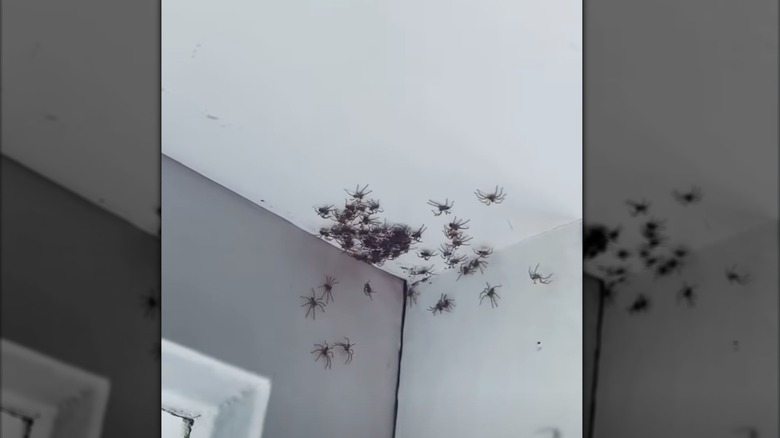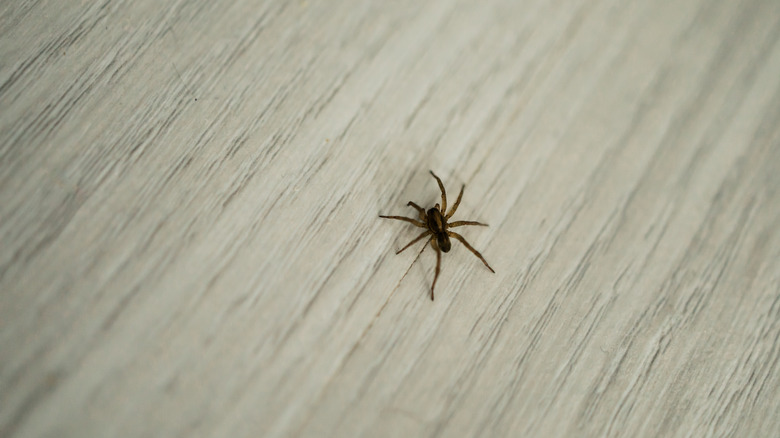How To Tell If You Have A Spider Infestation Or Just A Lone Visitor
Spiders are nature's pest control professionals, and there are over 40,000 species of these arachnids found across the world. But when they find their way into our homes, it can be troublesome for those who are afraid of the eight-legged creatures. Most spiders pose no threat to humans outside of the venomous types and are great to have around your property as a way to manage the number of pesky insects like mosquitoes or flies. However, a problem arises when a friendly spider here or there turns into a full-blown infestation, complete with warning signs like excess webs around your house, egg sacs, or seeing more spiders than usual.
It's important to make sure you aren't accidentally attracting spiders to your home, as some types of ivy vines are known to attract them. You should also take extra precautions, like sealing any door frames or windows with gaps, and keep your space free from clutter. Vacuuming and sweeping corners regularly can also help prevent spiders from building webs in these nooks. Don't forget to clean in areas they tend to frequent you may not visit as often, like the attic and basement, to prevent infestations from getting out of control.
Signs you may have a spider infestation
One of the first signs you might notice with a spider infestation is more spiders. This might seem obvious, but if you're noticing more than a few of these hanging around, it may be a cause for concern. Spiders tend to make their way inside throughout the year, but there tends to be an increase during the summer and early fall months. This is because their mating system occurs from September to late November, which is the time these critters are most active. So, while there can be a small uptick in the number you see, it shouldn't be a drastic increase.
Spider infestations can also come with finding egg sacs in places like corners, underneath furniture, or in an undisturbed web. These silk sacs are small in size, round in shape, and usually a white or cream color. Each sac can contain hundreds of babies, so you should use caution when cleaning these, though vacuuming them up is a popular method. With this increase in spiders, it's not uncommon to see more webs in corners that don't see a lot of activity. You may also see more webs popping up in damp or dark areas like bathrooms or on porches.
DIY remedies to repel spiders
There are plenty of DIY remedies out there that claim to repel spiders, but these are best performed only if you are certain there's no infestation issue. Some people use coffee grounds to keep spiders away, while others opt to use specific types of wood shown to keep arachnids at bay. However, one way to help keep them away is by spraying a peppermint or cedar oil mixture around the home, focusing specifically on areas where you see them most. Some people choose to use vinegar or cinnamon oil instead, but the main goal is to use a product with a strong odor. They have a highly sensitive sense of smell processed through organs on their legs, and a mixture of these products with water should be enough to deter them from wherever sprayed.
However, there are times when it's just necessary to bring in the professionals. If you notice potential signs of an infestation and things are not improving after cleaning the area, it may be best to reach out for help. It's best to take care of the problem before things get out of control and you're in an unsettling situation. It's also important to know the difference between common types of spiders to keep your family safe. Any signs of brown recluse or black widow spiders in your home should warrant an immediate call to a pest control professional.


